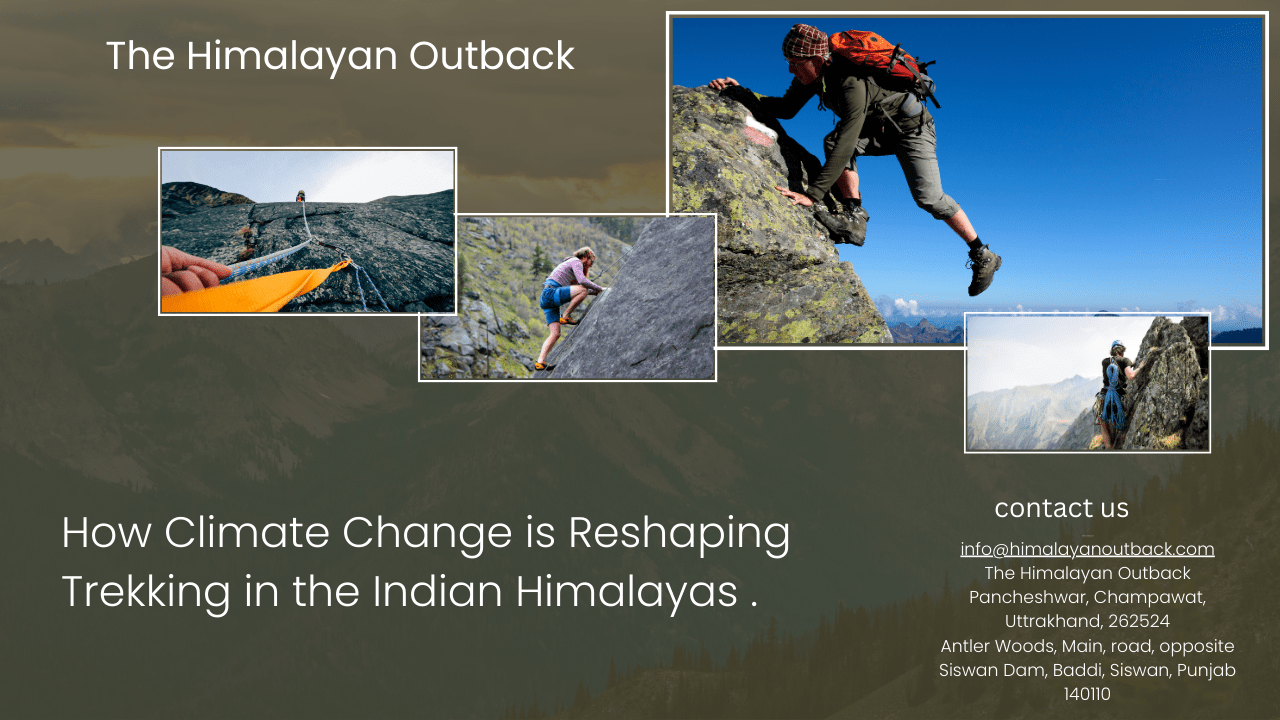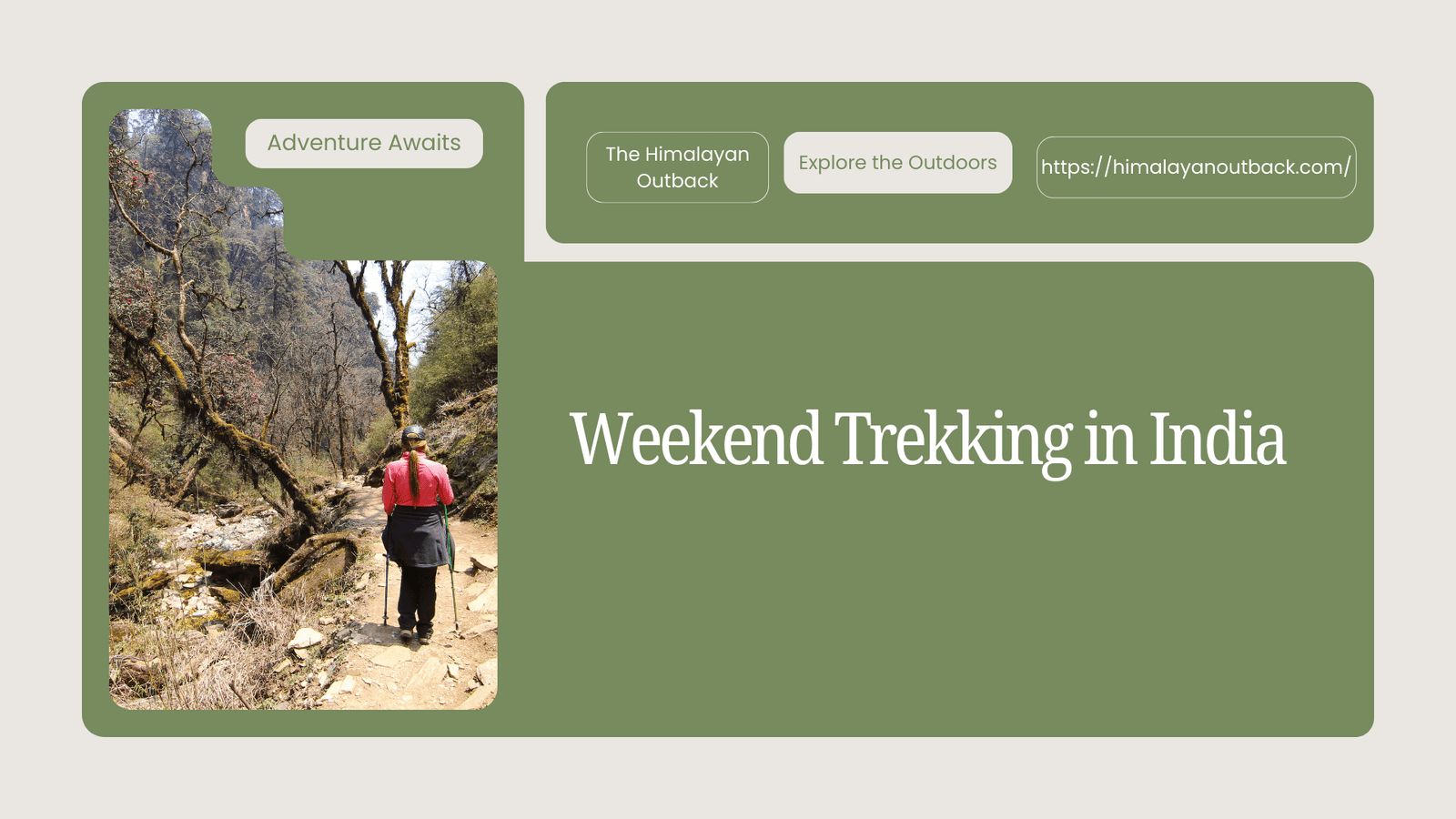The towering peaks of the Indian Himalayas have captivated adventurers for generations, offering some of the world’s most spectacular trekking experiences. From the legendary trails of Ladakh to the lush valleys of Himachal Pradesh, these mountains represent the ultimate frontier for outdoor enthusiasts. However, a silent transformation is underway across these ancient landscapes.
Climate change is fundamentally altering the conditions that have defined Himalayan trekking for decades. Rising temperatures, shifting weather patterns, and glacial retreat are creating new challenges for trekkers while simultaneously opening unexpected opportunities. Understanding these changes isn’t just about adapting to new conditions—it’s about preserving the future of mountain adventure and ensuring the safety of those who venture into these sacred peaks.
For anyone planning to experience trekking in the Indian Himalayas, recognizing these environmental shifts has become as essential as packing the right gear. The mountains are speaking, and seasoned trekkers are learning to listen.
The Changing Face of Himalayan Weather Patterns
Weather unpredictability has become the new normal across Himalayan regions. Traditional trekking seasons, once reliable markers for planning expeditions, now require more flexible approaches. The pre-monsoon period, historically ideal for high-altitude treks, increasingly features unexpected snowfall and temperature fluctuations.
Monsoon patterns have shifted dramatically, affecting popular routes throughout the Indian Himalayas. Extended rainy seasons now push into what were previously dry months, while some areas experience drought conditions during traditionally wet periods. This variability impacts trail conditions, water availability, and overall trekking safety.
Temperature swings have intensified at higher altitudes. Trekkers now encounter freezing conditions followed by rapid warming within the same day, creating challenging navigation scenarios. These temperature variations affect everything from clothing choices to camping strategies, requiring more versatile preparation than ever before.
Glacial Retreat and Its Impact on Popular Trekking Routes
Himalayan glaciers are retreating at unprecedented rates, fundamentally altering the landscape that defines many classic trekking experiences. The Gangotri Glacier, source of the sacred Ganges River, has receded significantly, changing both the physical terrain and spiritual significance of associated trekking routes.
Popular destinations for trekking in the Indian Himalayas now feature dramatically different views compared to photographs taken just a decade ago. Glacial lakes have formed where solid ice once existed, creating both stunning new vistas and potential hazards. These newly formed bodies of water can be unstable, posing risks for trekkers unfamiliar with changing conditions.
The retreat has exposed loose rock and unstable terrain along previously secure routes. Traditional camping sites near glacial areas have become unsuitable due to rockfall risks and changing water sources. Trekking guides now spend considerable time identifying safe alternatives and updating route information regularly.
Water Scarcity and Resource Management Challenges
Water availability has become increasingly unpredictable across Himalayan trekking circuits. Springs that sustained generations of trekkers have dried up, while others have changed their flow patterns dramatically. This shift requires careful planning and often longer carries between reliable water sources.
Local communities dependent on these water sources face their own challenges, creating ripple effects for the trekking industry. Tea houses and guest lodges along popular routes sometimes struggle to maintain adequate water supplies during peak trekking seasons. This scarcity affects both the quality of services available and the sustainability of tourism in remote mountain areas.
Trekking groups now carry water purification systems more extensively and plan routes with water scarcity in mind. The romantic notion of drinking directly from mountain streams has given way to more cautious approaches, as water quality can fluctuate with changing environmental conditions.
Flora and Fauna: Ecological Shifts in Mountain Ecosystems
The delicate balance of Himalayan ecosystems is shifting upward as temperatures rise. Plant species that once thrived at lower altitudes now struggle to survive, while those adapted to extreme cold face pressure from changing conditions. This ecological migration affects the visual experience of trekking in the Indian Himalayas, as familiar landscapes gradually transform.
Wildlife patterns have also shifted significantly. Animals traditionally found at specific altitudes now range more widely, seeking suitable habitat conditions. While this can create exciting unexpected wildlife encounters, it also disrupts traditional ecological relationships that local communities have observed for generations.
Alpine meadows, renowned for their seasonal wildflower displays, now bloom at different times and elevations. Trekkers planning trips around these natural spectacles must adjust their timing and expectations. Some species face local extinction risks, making current sightings potentially once-in-a-lifetime experiences.
Safety Considerations in a Changing Environment
Traditional risk assessment models for Himalayan trekking require significant updates. Weather windows that once provided predictable safe passage now demand real-time monitoring and adaptive decision-making. Experienced guides increasingly rely on current satellite data rather than historical weather patterns.
Avalanche risks have intensified in many areas due to unstable snow conditions caused by temperature fluctuations. Routes considered safe for decades now require careful evaluation before each trekking season. Local knowledge, while still valuable, must be supplemented with current scientific data about changing conditions.
Emergency evacuation procedures face new complications as weather becomes less predictable. Helicopter rescues, already challenging at high altitudes, become more difficult when weather windows are uncertain. Trekking groups now carry more comprehensive communication equipment and develop more detailed contingency plans.
Adaptation Strategies for Modern Himalayan Trekking
Successful trekking in the Indian Himalayas now requires greater flexibility than traditional expeditions. Itineraries must include buffer days for weather delays and alternative route options. This adaptive approach, while requiring more planning, often leads to more rewarding and authentic mountain experiences.
Equipment selection has evolved to address wider temperature ranges and more variable conditions. Layering systems now emphasize versatility over specialization, while shelter choices must account for both extreme cold and unexpected wet conditions. Modern trekkers invest in gear that performs across broader environmental spectrums.
Local partnerships have become more critical than ever. Working with experienced local guides who understand current conditions provides essential safety advantages. These partnerships also support mountain communities adapting to changing environmental and economic conditions.
The Future of High-Altitude Adventure
Climate science projections suggest continued changes across Himalayan regions, requiring ongoing adaptation from the trekking community. However, these challenges also present opportunities for more sustainable and respectful mountain tourism. Smaller group sizes, extended stays in local communities, and deeper cultural engagement may become standard practices.
Technology integration offers promising solutions for managing climate-related risks. Real-time weather monitoring, improved communication systems, and better route planning tools help trekkers navigate changing conditions safely. These innovations complement rather than replace traditional mountain skills and local knowledge.
Research collaborations between trekking organizations and climate scientists create valuable data while enhancing safety protocols. Trekkers increasingly contribute to citizen science projects, helping monitor environmental changes while pursuing their passion for mountain adventure.
Embracing Change While Preserving Adventure
The Indian Himalayas continue to offer transformative trekking experiences despite environmental challenges. These changes, while requiring adaptation, add new dimensions to mountain adventures. Trekkers witness geological and ecological processes typically measured in millennia, creating unique opportunities for environmental education and personal growth.
Climate change impacts on Himalayan trekking represent both crisis and opportunity. The crisis demands immediate attention to safety protocols, environmental stewardship, and sustainable tourism practices. The opportunity lies in developing deeper relationships with mountain environments and local communities while experiencing landscapes in dynamic transition.
Modern trekking in the Indian Himalayas requires embracing uncertainty while maintaining respect for mountain environments. Those willing to adapt their expectations and approaches often discover that these challenges enhance rather than diminish their mountain experiences. The key lies in remaining flexible, prepared, and respectful of the powerful forces reshaping these ancient peaks.






